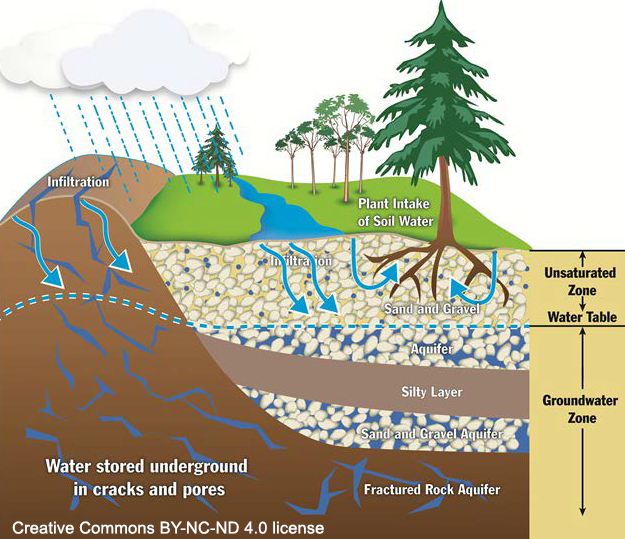These cold and rainy fall days may feel a little uncomfortable, but with the rain, the land is actually getting a “recharge.” The land is coming out of a drought year. We need the aquifers refilled to maintain drinking water and long term watershed supply. When it rains, water does not stop moving when it hits the ground. Some water flows along the land into streams, bays, and lakes. Some water is used up by trees and plants and other water particles evaporate and return to the atmosphere which increases humidity and storm potential. Local forecasts keep changing for snow and precipitation projections but based on the water systematic increases, water increases the potential recycling within the local system. It also provides opportunities to balance carbon and other important air quality effects from the local community and ecosystem.
Recharge and water supply from the fall perspective set up the local community to withstand the frost freeze changes during winter months. Many storms like the last week, while consistent and bountiful, the 5 inches of average rain in the last week has helped elevate water tables, recharge many local wells and increase Lake Ontario’s water level during times of draw down to help balance shoreline levels. All surface water has a purpose and excess water seeps into the ground.
The water that seeps into the ground clings to particles of soil and plant roots just below the land surface that provide plants enough to grow. It also provides winter resiliency for the plants during hardening for healthy stock next year. The water not used by plants moves deeper into the ground and downward through empty spaces or cracks in the soil, sand, or rocks until it reaches a layer of rock through which water cannot easily move. This creates a reserve. The top of the water in the soil, sand, or rocks is called the water table, and the water that fills the empty spaces and cracks is called the groundwater zone. Water seeping down from the land surface adds to the groundwater and is called recharge water. Maintaining good aquifer levels will support water storage for water treatment systems and irrigation for agricultural production, and the garden plants and trees.


